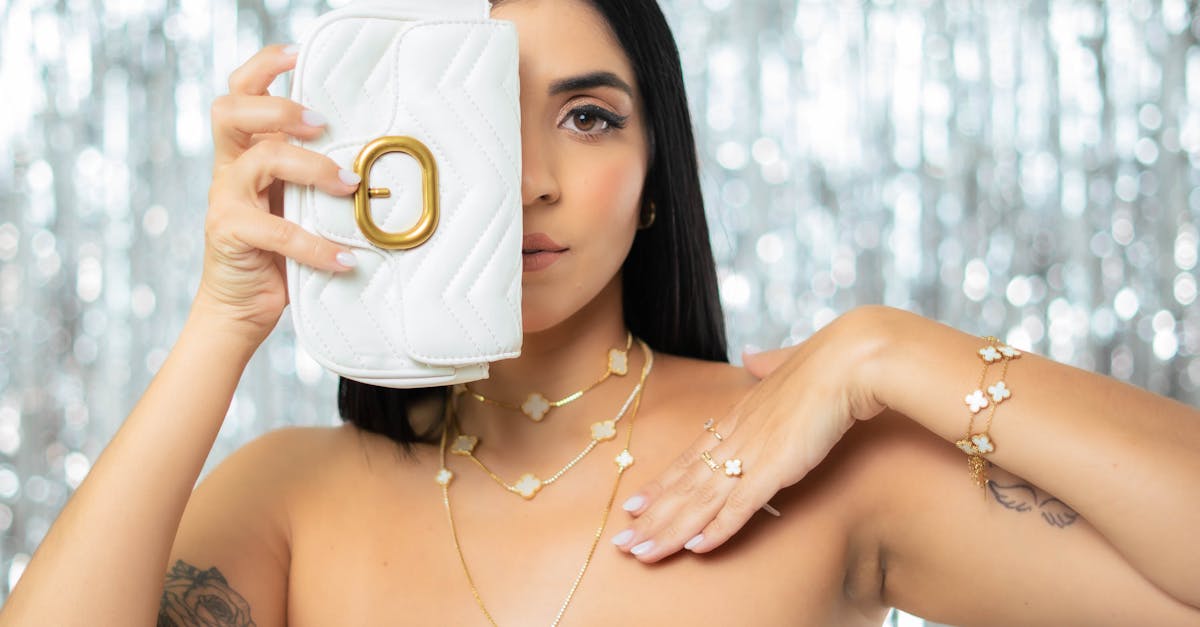Unveiling the Gilded World: A Comprehensive Guide to Gold’s Brands, Quality, Investments, Aesthetics, and More

Gold: More Than Meets the Eye
Gold has captivated humanity for centuries, not only for its intrinsic beauty but also for its versatility. From a symbol of wealth and power to a haven during economic uncertainty, this precious metal plays a multifaceted role in our lives. Join us as we unravel the intricacies of gold’s world, exploring the brands that define it, the factors that determine its quality, and the savvy strategies for investing in it. We’ll also delve into gold’s allure in jewelry-making, uncovering the personal preferences that shape its aesthetics. Along the way, we’ll discover the ethical considerations surrounding gold sourcing and explore the dynamics of its resale market. Whether you’re a seasoned investor looking to expand your portfolio, a prospective buyer seeking the perfect piece of jewelry, or simply curious about the allure of this timeless metal, we invite you to embark on this golden journey with us.
A Golden Guide for Investors, Jewelers, and Aesthetes
Like any precious commodity, gold’s value extends beyond its physical properties. Understanding the players in the gold market and the factors influencing its quality is crucial for informed decision-making. In this section, we’ll decode the intricacies of brand reputation, customer experiences, and market presence to help you navigate the gold-buying landscape with confidence. But gold’s worth is not solely defined by its brand or quality. Its versatility extends to the realm of investments, where it plays a unique role in balancing risk and reward. We’ll explore the factors that make gold a valuable asset in any portfolio and guide you through the potential pitfalls to ensure your investments shine as brightly as the metal itself.
Key Insights
- Understanding brand reputation and customer experiences is crucial when purchasing gold.
- Karatage and purity levels significantly impact gold’s quality, value, and durability.
- Gold plays a multifaceted role in investment portfolios, offering both risk and reward, and can serve as a hedge against inflation and market volatility.
- Personal style and preferences heavily influence the choice of gold jewelry, with factors such as color, design, and karatage playing key roles.
- Ethical gold sourcing ensures that gold has been mined and processed responsibly, minimizing environmental damage and protecting workers’ rights.
1. Brand Matters: Weighing Reputation and Trust
Brand Matters: Weighing Reputation and Trust
When embarking on your gold-buying journey, it’s not just about the gleaming metal itself but also about the brand behind it. In the world of gold, brands are more than just names; they represent a promise of quality, a commitment to customer satisfaction, and a legacy of trust. A reputable brand assures you that you’re investing in genuine gold, free from impurities and deceit.
But how do you discern the trustworthy brands from the rest? Look for those with a long-standing presence in the market, a proven track record of delivering exceptional products and services, and a commitment to ethical sourcing. Read online reviews, seek recommendations from fellow gold enthusiasts, and don’t hesitate to contact the brand directly with any questions or concerns.
Remember, buying gold is not just a transaction; it’s an investment in a piece of timeless beauty and potential value. Trusting a reputable brand gives you peace of mind, knowing that your hard-earned money is in good hands.
2. Assessing Gold Quality: Understanding Karats and Purity

Assessing Gold Quality: Understanding Karats and Purity
Now that you know the importance of choosing a reputable brand, let’s delve into the technical aspects of gold quality. Understanding karats and purity levels is crucial for making informed decisions about your gold purchases.
Karatage refers to the proportion of pure gold in an alloy. Pure gold, also known as 24-karat gold, is very soft and malleable, making it impractical for everyday wear. Therefore, gold is often alloyed with other metals, such as copper, silver, or zinc, to increase its durability and create different colors. The higher the karatage, the higher the percentage of pure gold in the alloy. Common karatages for gold jewelry include 10K, 14K, 18K, and 22K.
Purity levels, expressed in percentage, provide another measure of gold quality. Pure gold is 100% pure, but for practical purposes, most gold jewelry falls between 37.5% pure (9K) and 91.6% pure (22K). The higher the purity, the softer and more valuable the gold. However, higher purity also means the gold is more susceptible to scratches and dents.
Understanding karats and purity levels will empower you to make informed decisions about the quality of gold you purchase, ensuring that you get the best value for your money.
3. Gold as an Investment: Balancing Risk and Reward
Gold as an Investment: Balancing Risk and Reward
Gold has long been considered a safe haven asset, a sanctuary for investors during times of economic uncertainty. Its value tends to rise when stocks and other risky investments fall, making it a valuable tool for diversifying your portfolio and reducing overall risk.
But gold is not without its risks. The price of gold can be volatile, influenced by factors such as global economic conditions, political instability, and supply and demand dynamics. Inflation can also impact the value of gold, as investors often turn to gold as a hedge against rising prices.
The key to successful gold investing lies in understanding the risks and rewards and incorporating gold into your portfolio in a way that aligns with your financial goals and risk tolerance. Consider your investment horizon, risk appetite, and overall portfolio allocation when determining the right amount of gold for your investment strategy.
4. Choosing Gold for Style and Aesthetics

Choosing Gold for Style and Aesthetics
Gold’s timeless beauty and versatility make it a favorite among jewelry enthusiasts. Whether you prefer the understated elegance of a simple gold band or the eye-catching opulence of an elaborate necklace, there’s a gold piece that perfectly complements your style and personality.
Personal preferences play a significant role in choosing gold jewelry. Some prefer the warm, rich hue of yellow gold, while others favor the cool, sophisticated tone of white gold or the delicate blush of rose gold. The karatage of the gold also affects its appearance and durability. Higher karat gold is softer and more malleable, allowing for intricate designs and delicate details. Lower karat gold is more durable and scratch-resistant, making it a good choice for everyday wear.
When selecting gold jewelry, consider the overall design and craftsmanship. Look for pieces that are well-made, with secure settings and smooth finishes. Whether you opt for classic solitaire studs or a statement-making pendant, choose pieces that reflect your unique style and bring you joy every time you wear them.
5. Resale Value: Maximizing Returns on Gold Purchases
Resale Value: Maximizing Returns on Gold Purchases
If you’re considering selling your gold jewelry or bullion, understanding the dynamics of gold resale is crucial for maximizing your returns. Several factors influence the resale value of gold, including its weight, karatage, purity, and condition.
The weight of the gold, measured in grams or ounces, is a primary determinant of its value. Higher karat gold, with a higher percentage of pure gold, commands a premium price. The purity of the gold, expressed as a percentage, also affects its resale value. Additionally, the condition of the gold, including any scratches or damage, can impact its worth.
To maximize your returns when reselling gold, consider selling to reputable dealers or platforms. Research different buyers to compare their rates and fees. You can also enhance the resale value of your gold by keeping it in good condition, with proper storage and regular cleaning. By understanding the factors that affect resale value and implementing these strategies, you can ensure a fair and profitable return on your gold purchases.
6. Gold for All: Uncovering Personal Preferences
Gold for All: Uncovering Personal Preferences
Gold’s allure is universal, yet highly personal. Its beauty lies in the eye of the beholder, with diverse preferences shaping individual choices. Some find warmth and elegance in the rich hue of yellow gold, while others are drawn to the cool sophistication of white gold or the delicate charm of rose gold.
Cultural influences also play a role in shaping gold aesthetics. In some cultures, yellow gold is considered a symbol of wealth and prosperity, while in others, white gold is preferred for its modern and understated look. Personal experiences and memories can also influence preferences. For instance, someone who associates yellow gold with a cherished family heirloom may have a strong affinity for that particular color.
Ultimately, the beauty of gold lies in its ability to adapt to individual tastes and styles. Whether you prefer classic designs or contemporary pieces, intricate details or minimalist elegance, there’s a gold piece that perfectly complements your personality and story.
7. Ethical Considerations: Responsible Gold Sourcing
Ethical Considerations: Responsible Gold Sourcing
In today’s world, consumers are increasingly mindful of the ethical implications of their purchases. When it comes to gold, responsible sourcing is paramount. Ethical gold sourcing ensures that the gold you buy has been mined and processed in a way that minimizes environmental damage and protects the rights of workers and local communities.
Look for certifications from organizations like the Responsible Jewellery Council (RJC) or the Fairtrade Foundation. These certifications provide assurance that the gold has been sourced responsibly, meeting strict environmental and social standards. Industry standards, such as the Kimberley Process, also play a crucial role in preventing conflict diamonds and gold from entering the supply chain.
By choosing ethically sourced gold, you not only adorn yourself with a beautiful metal but also contribute to a more sustainable and just world.
What is the best way to ensure the gold I buy is ethically sourced?
Look for certifications from reputable organizations like the Responsible Jewellery Council (RJC) or the Fairtrade Foundation. These certifications provide assurance that the gold has been sourced responsibly, meeting strict environmental and social standards.
Why is ethical gold sourcing important and beneficial?
Ethical gold sourcing helps protect the environment, ensures the well-being of mining communities, and prevents conflict gold from entering the supply chain. By choosing ethically sourced gold, you contribute to a more sustainable and just world.
What can I do as a consumer to promote ethical gold sourcing?
You can choose to buy gold from jewelers and retailers that prioritize ethical sourcing. Ask about their sourcing policies and look for certifications like the RJC or Fairtrade. By making informed purchases, you can drive demand for ethically sourced gold and encourage responsible practices throughout the industry.
Key Insights
| Key Insight | Description | |—|—| | Brand Matters | Consider brand reputation, customer experiences, and market presence when purchasing gold. | | Understanding Gold Quality | Karatage and purity levels determine gold’s quality, value, and durability. | | Gold as an Investment | Gold offers a balance of risk and reward in investment portfolios and can hedge against inflation and market volatility. | | Gold for Style and Aesthetics | Personal preferences, including color, design, and karatage, influence the choice of gold jewelry. | | Ethical Considerations | Choose ethically sourced gold to ensure responsible mining practices and minimize environmental and social impact. |
Leave a Reply